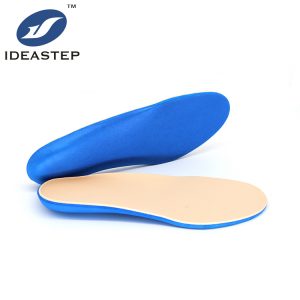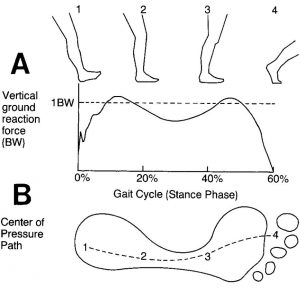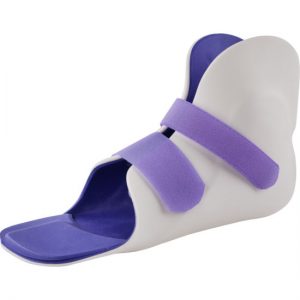The biggest function of our feet is to stand and walk. Observing how everyone walks on the road, you can find that everyone is more or less different. Maybe some people can observe obvious skewness. Although they may not have pain problems, a physical therapist can help in this regard and give you a beacon.
The important feet are also the most problematic place
Our feet are the only part that is in contact with the ground when we walk and jump. When our feet have problems, it is like the foundation of a house is unstable, which will surely cause more physical problems! In addition to the three major interventional methods of physical therapy: instrument therapy, hand therapy, and exercise therapy for the problem of the foot, we are going to talk about the insoles in the foot equipment today!
Foot equipment includes shoes, shoe modifications, and insoles. The main purpose is to support and adjust the joint arrangement of the lower limbs to correct and prevent deformation, or to adjust the position and size of the sole to promote foot function. You can find a wide variety of insoles on the Internet or the market, each claiming to have different functions, such as arch correction, decompression, heightening, sports insoles… and maybe you have also heard of “customized insoles” to address your problems. To make insoles that only suit you.

Our great feet
Before we learn more about the insole, we must first understand the function of the foot, let us review the function of the foot in walking
Let’s take a closer look at the cushioning period mentioned in the stepping on the ground. The first position of the heel will be the outer side. Now you can pick up your old shoes to see if the outer side of the heel wears the most? Slowly move forward with the center of gravity, along the outer foot knife straight forward and inward, to go out between the big toe and the second toe, ending the entire standing period of walking.

Generally speaking, after the heel is weight-bearing, the calcaneus should be kept in the center (upright and perpendicular to the floor, the middle gray line in the figure below). It has become what we commonly call flat feet. At this time, the line of gravity will not go to the front but will go straight out from the middle. As a result, the foundation, the calcaneus, which hits the ground first, cannot produce the greatest reaction force on the ground. , The medial arch can’t be stretched to store energy and then rebound to generate forward propulsion, resulting in more energy consumption for gait or running, and excessive wear of body tissues over the long term, prone to pain problems.
For flat feet, the role of the insole plays the role of adjusting the position of the arch of the foot, positioning it to prop up the arch of the foot, improving our standing posture, avoiding excessive collapse when landing during the dynamic process, and improving the efficiency of walking.
Another common high arch foot, which is the opposite of flat feet, is characterized by a very deep arch! For people of the high bow family, because of the tightly arranged skeletal structure, the mobility of adjacent joints is poor, the tendons that prop up the arch of the foot are also quite tight, and the tendons that are inelastic when walking or running are easy to cause tendonitis, Plantar fasciitis. The role of the insole here is to support, achieve the effect of shock absorption, increase the contact area and decompression.
The middle is normal foot standing posture, the far left is flat feet, and the far right is high arch feet
This is the simplest and most common foot problem. There are always many more, such as synovial bursitis, valgus thumb, Morton’s neuroma, etc…
The interesting thing about physical therapy is that the whole body is related. Small feet will affect the knees, waist, shoulders, and even headaches. Scoliosis is also common, but don’t get me wrong. It can be changed by wearing insoles. After all, these problems are layered by layers of complex problems in various parts. Just reminding the heel here is also one of the most important keys!
After establishing the most basic concept of insoles, let’s take a look at how it is the focus of evaluation!
How to evaluate what kind of insole is suitable for a person?
*Subjective consultation (family history, condition, expected results, living habits, etc.)
*Objective observation (whether the foot structure is deformed, whether the foot joints are relatively active, whether there are long and short feet, the arrangement of the body joints when standing, the wear and tear of the original shoes of the case, etc.)
OS: We often see in the market selling well-made insoles. Due to mass production, it is often unable to meet personal needs. If your foot pain is bothering you, it is recommended to give professional physical therapy. It will be better for the teacher and the insole maker to evaluate your personal problems!
After evaluating and summarizing the problem, we can make it. First, we must use different insole materials, which can be roughly divided into soft materials, semi-hard materials, and hard materials.
*The soft material is mainly foam material, shock absorption, and decompression, usually depending on the top layer of the insole or the material that protects the bone synapse.
*There are many types of semi-hard materials, which may be rigid foam, corkboard, etc., which are usually the main structure to achieve a supporting effect.
*Generally, hard material insoles will not be seen. It is more common in ankle-foot orthoses or UCBL and SMO feet with stronger correction effects. Most of them are hard plastics. Because it does not have any elasticity, it is not suitable for high-intensity activities. It is easy to collide and rub against bone protrusions or joints, causing discomfort.


How are the customized insoles made?
The production process is actually not as difficult as imagined. The difficulty lies in the changing situation of experience and response to individual cases.
After the insole is customized, match a pair of suitable good shoes to observe whether the gait, posture, and other problems are improved, and then make some slight grinding adjustments, through the good interaction between the insole and the shoes, so that you will not walk in the same way. The body is a burden.
But don’t forget that most of the insoles and shoes are only temporary and keep your feet in a good state when you go out. Remember to return to the problem of your feet, find the root of the problem through professional evaluation, and continue treatment and training, And finally, get rid of the need for insoles and shoe protection, and have a truly healthy body. However, for other people, such as flat feet caused by children’s bone development problems, diabetic amputations, and deformed feet, shoes and insoles may play the role of chronic prescriptions, and they must be worn when bearing weight. To achieve safe and efficient walking!
